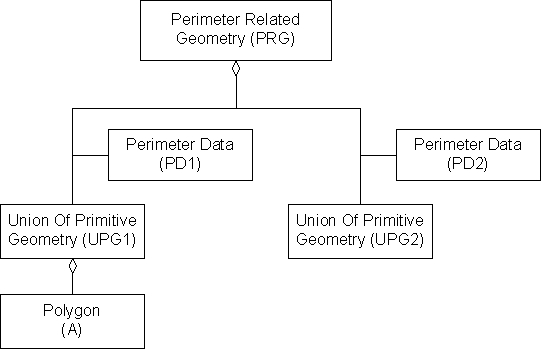Consider a <Perimeter Related Geometry> PRG with two branches, each with a distinct component <Union Of Primitive Geometry> as shown in the diagram below.

By the <<Perimeter Related Organizing Principle>>, at least one of the vertices of A shall fall within the region described by the <Perimeter Data> PD1. If PRG has strict_organizing_principle == SE_TRUE, then ALL the vertices of A shall do so.
Consider a second <Polygon> B, a sibling of A within UPG1. B falls on the boundary dividing the regions described by PD1 and PD2, such that at least one of B's vertices falls within PD1 and at least one of B's vertices falls PD2.
By the <<Perimeter Related Organizing Principle>>, PRG's strict_organizing_principle flag shall be set to SE_FALSE, since branches are present which do not fully contain their objects.